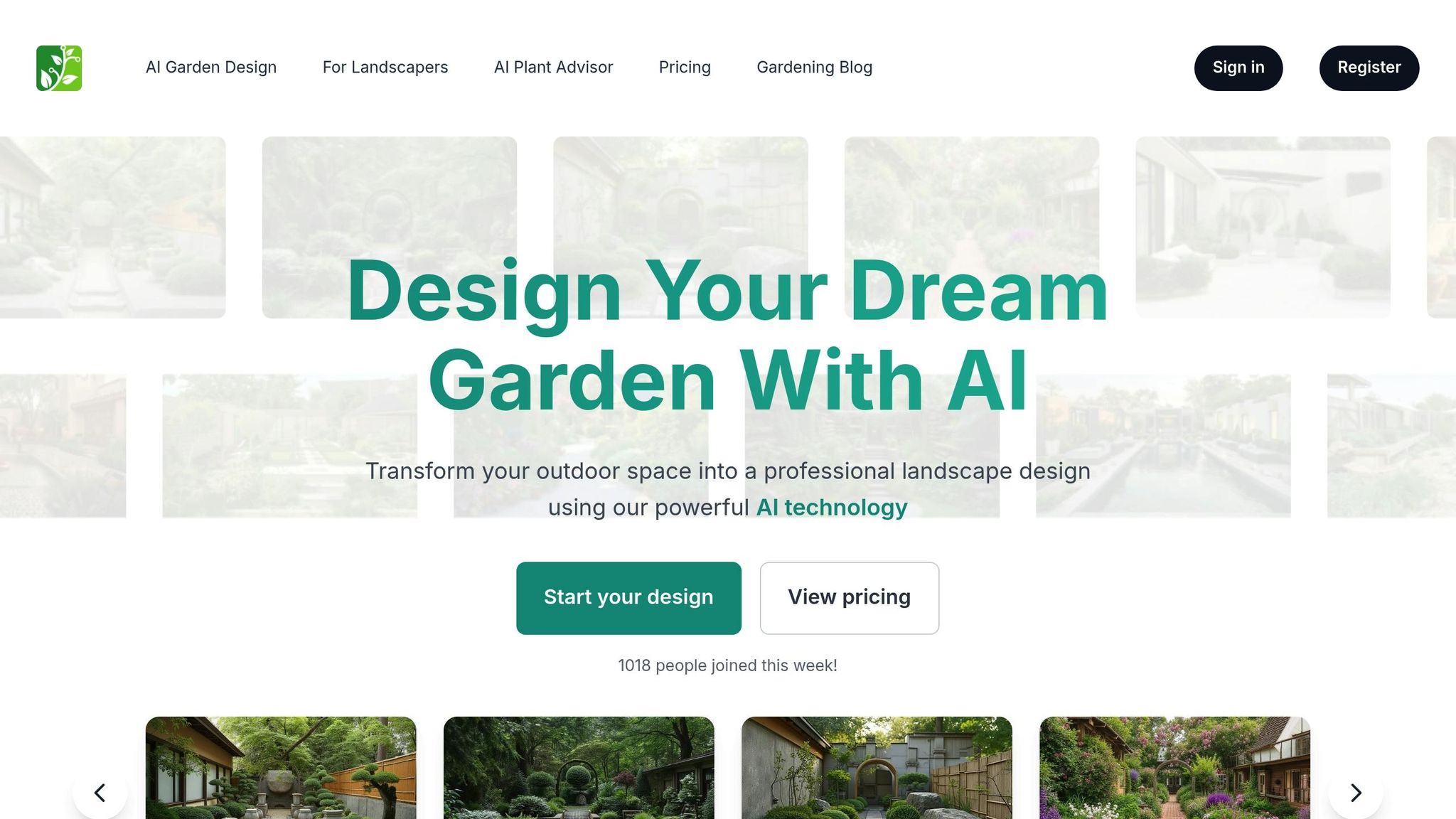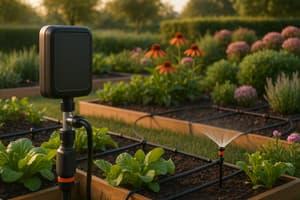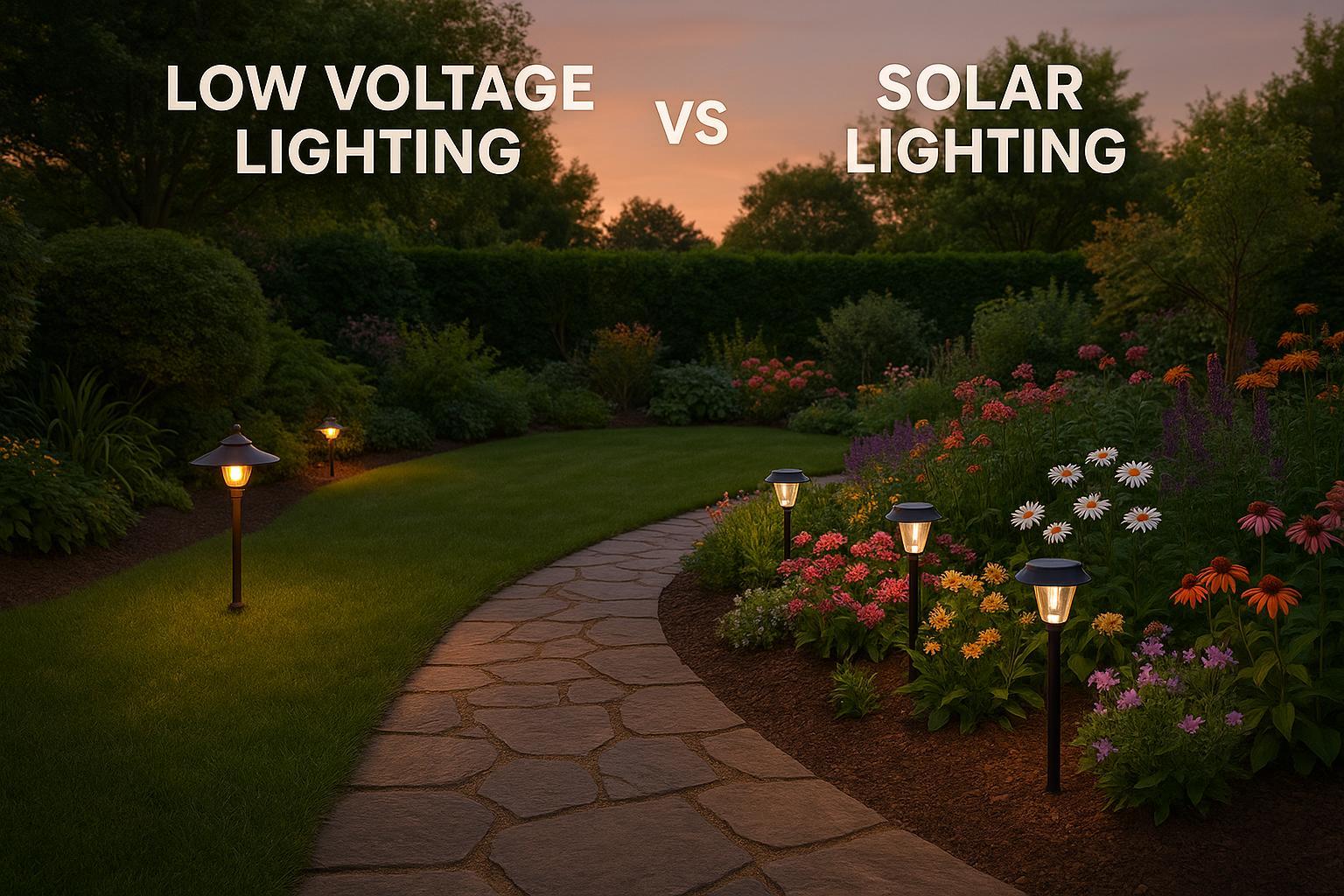Ultimate Guide to AI-Powered Soil Monitoring

Want healthier soil and thriving plants? AI-powered soil monitoring can help.
AI soil monitors provide real-time data on moisture, nutrients, pH, and more, giving you instant insights to improve soil care. Unlike traditional methods, which are slow and often inaccurate, AI tools offer faster results, reduce costs, and support sustainable gardening practices.
Key Benefits of AI Soil Monitoring:
- Instant Feedback: Get real-time updates on soil health.
- Cost Savings: Optimize water and fertilizer use.
- Eco-Friendly: Reduce waste and chemical runoff.
- Personalized Advice: Tailored recommendations based on your soil and location.
Quick Overview:
| Feature | Traditional Methods | AI-Powered Monitoring |
|---|---|---|
| Turnaround Time | Days to weeks | Real-time |
| Accuracy | Limited | High |
| Cost Efficiency | Expensive over time | Saves resources long-term |
| Ease of Use | Manual and time-consuming | Automated and user-friendly |
AI soil monitors, like AIGardenPlanner, even integrate with apps to provide customized gardening plans and alerts based on live data. Ready to revolutionize your garden? Dive into the details below.
AI-Powered Agricultural Safety and Soil Moisture Monitoring ...

How AI Soil Monitoring Works
AI-based soil monitoring uses cutting-edge sensors and machine learning to provide real-time insights into soil health. This technology helps gardeners and farmers manage soil conditions more effectively.
Machine Learning Systems
These systems rely on machine learning algorithms to process data from various sensors. They analyze factors like soil chemistry, physical properties, and environmental conditions. As data accumulates, the system improves its predictions and fine-tunes soil management strategies. The quality of these insights hinges on the accuracy of the data collected from the sensors.
Sensor Networks
The backbone of soil monitoring is a network of sensors. Common types include:
- Probes that measure soil moisture, temperature, and electrical conductivity at different depths
- Environmental sensors that track multiple layers of data
- Chemical sensors to monitor pH and nutrient levels
- Wireless nodes for transmitting data to a central system
Together, these sensors provide a detailed view of soil conditions, making it possible to monitor gardens of various sizes with only a few well-placed devices.
Data Analysis Methods
The data from sensors is processed to turn raw numbers into actionable insights. By combining historical trends with live data, these systems can:
- Detect soil trends and patterns
- Create predictive models for irrigation, fertilization, and other adjustments
- Offer automated recommendations to improve soil management
This data-driven method not only simplifies soil care but also supports quicker, more precise decision-making, as explored in the following sections.
Main Advantages of AI Soil Testing
AI-based soil monitoring systems are changing the way we manage soil health in gardens and farms, offering a faster, more efficient alternative to traditional methods.
Improved Accuracy and Faster Results
AI soil monitoring provides precise, real-time analysis. Traditional soil testing methods can take days - or even weeks - to deliver results, but AI systems offer near-instant feedback. Equipped with advanced sensors, these systems constantly track critical soil metrics, identifying changes early on. This allows for quick action to address issues before they escalate.
Lower Costs
By leveraging real-time data, AI soil monitors help cut costs. They support smart irrigation, ensuring water is used only when necessary, and optimize fertilizer application by focusing on areas that actually need it. This reduces waste and lowers labor expenses by minimizing the need for manual testing, making soil management more affordable.
Environmental Benefits
Smart irrigation and targeted fertilizer use reduce chemical runoff and save water. These practices help protect soil biodiversity and prevent long-term damage, while also lessening the environmental impact of gardening and farming. Early issue detection ensures healthier soil and promotes sustainable practices, making AI soil monitors a valuable tool for both hobbyists and professionals.
sbb-itb-4d6a8dd
🚀 Ready to Reinvent Your Garden?
Join thousands of homeowners who have transformed their gardens using our AI design tool. Upload one photo to explore endless possibilities.
Get your AI garden designs →Choosing an AI Soil Monitor
Use these tips to get accurate soil data and keep your garden thriving.
Pick an AI soil monitor that provides reliable information and suits the size of your garden. This will help you improve plant growth and make the most of your resources.
Key Features to Look For
The best soil monitors come with multiple sensors to track moisture levels, pH, and nutrients. They provide real-time updates and send alerts when needed. Many also sync with tools like AIGardenPlanner, offering personalized advice based on your soil type, location, and climate.
Make sure the device covers these basics before deciding on your budget.
Budget and Garden Size
Consider both upfront costs and any subscription fees to find a system that fits your garden's scale. AIGardenPlanner offers flexible pricing, starting at $19 per month or $99 per year, making it a good option for a variety of gardening needs.
Also, think about how easy the system is to use - this can make a big difference in how effectively you monitor your soil.
Simplicity and Usability
A user-friendly system ensures you can keep track of your soil without hassle. Look for features like:
- Mobile app compatibility
- Easy-to-read data displays
- Alerts for changing soil conditions
For outdoor use, durable and weather-resistant sensors are a must. Also, choose a system that's simple to install and requires little upkeep. This makes it easier to incorporate into your gardening routine.
AIGardenPlanner is built with simplicity in mind, making it a great choice for both beginners and experienced gardeners looking to pair soil monitoring with garden planning.
Current Uses and Future Development
AI-powered soil monitoring is reshaping how gardens are managed, offering precise insights and making care easier than ever.
Home Garden Systems
Today’s soil monitors provide real-time updates on moisture levels, nutrient content, and pH. Many of these devices connect to mobile apps, sending instant alerts and offering tailored advice. For urban gardeners with limited space and busy schedules, these sensors can keep track of multiple garden areas at once, making them incredibly convenient.
This data doesn’t just help with daily care - it can also play a key role in planning and improving overall garden management.
AIGardenPlanner Integration

AIGardenPlanner uses soil monitoring data to create customized gardening plans. It provides tools to:
- Select plants that thrive in local soil conditions
- Set up maintenance schedules based on real-time updates
- Access detailed growing guides tailored to your location
Pricing options include a Pay As You Go plan for $15, a Starter plan at $9 per month (billed annually at $99), and a Pro plan for $249 per year.
New Features and Challenges
Recent improvements now allow for better real-time analysis and predictive alerts. However, challenges remain, including sensor placement, battery life, and interpreting complex data. Looking ahead, advancements aim to improve accuracy, provide more specific advice for individual plants, and further integrate with garden planning tools.
Summary
AI-powered soil monitoring is changing the way gardeners manage their spaces by providing real-time, data-driven insights. Here's how it helps:
- Precision: Tracks key soil metrics instantly and accurately.
- Automation: Sends alerts and maintenance tips automatically.
- Resource Efficiency: Cuts down on water waste and optimizes fertilizer use.
- Personalization: Offers advice tailored to your garden's unique conditions.
These features pave the way for smarter garden planning tools.
AIGardenPlanner and Soil Data
AIGardenPlanner takes things a step further by using real-time soil data to deliver customized gardening insights. The platform's AI Plant Advisor analyzes your garden's location and soil conditions to create plans that work for you. Key features include:
- Smart Plant Selection: Suggests plants suited to your soil and climate.
- Custom Growing Guides: Provides detailed care schedules based on live soil data.
- Dynamic Planning: Adapts garden designs as soil conditions change.
AIGardenPlanner offers affordable plans designed to fit different gardening needs. With access to the AI Plant Advisor and location-specific recommendations, gardeners can make better decisions for their soil. This blend of soil monitoring and planning tools points to the future of efficient, eco-friendly gardening.
Related posts
Related Articles

AI Tools for Designing Seasonal Garden Features
Explore how AI tools streamline seasonal garden design with personalized plans, plant suggestions, and visualizations for year-round beauty.

Battery Irrigation Trends for Smart Gardens
Explore the latest trends in battery-powered irrigation systems, blending smart technology and eco-friendliness for efficient garden management.

AI Tools for Climate-Specific Garden Design
AI tools simplify garden design by tailoring plant selection, layouts, and care plans to local climates, ensuring a thriving garden.

Low Voltage Lighting vs. Solar Lighting
Explore the pros and cons of low voltage versus solar lighting for your garden, including costs, performance, and best uses.

Maximizing Your Harvest: Tips for Planning Your Vegetable Garden Layout
Learn why planning your vegetable garden layout is important and get tips on maximizing your space, choosing the right plants, and avoiding disease and pest infestations.

5 Steps to Merge AI with Cottage Garden Design
Integrate AI into your cottage garden design process with five essential steps for a beautiful and practical outdoor space.